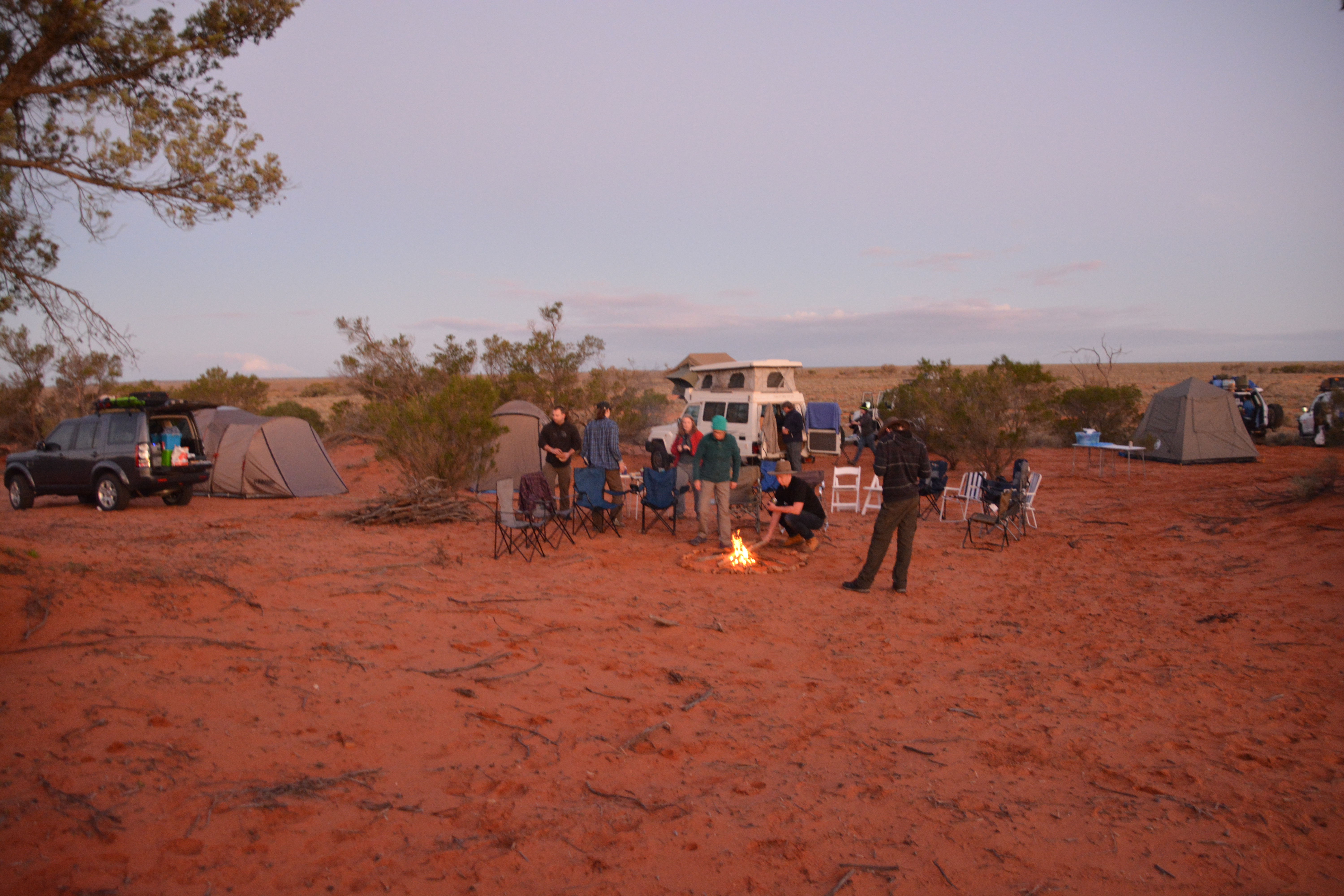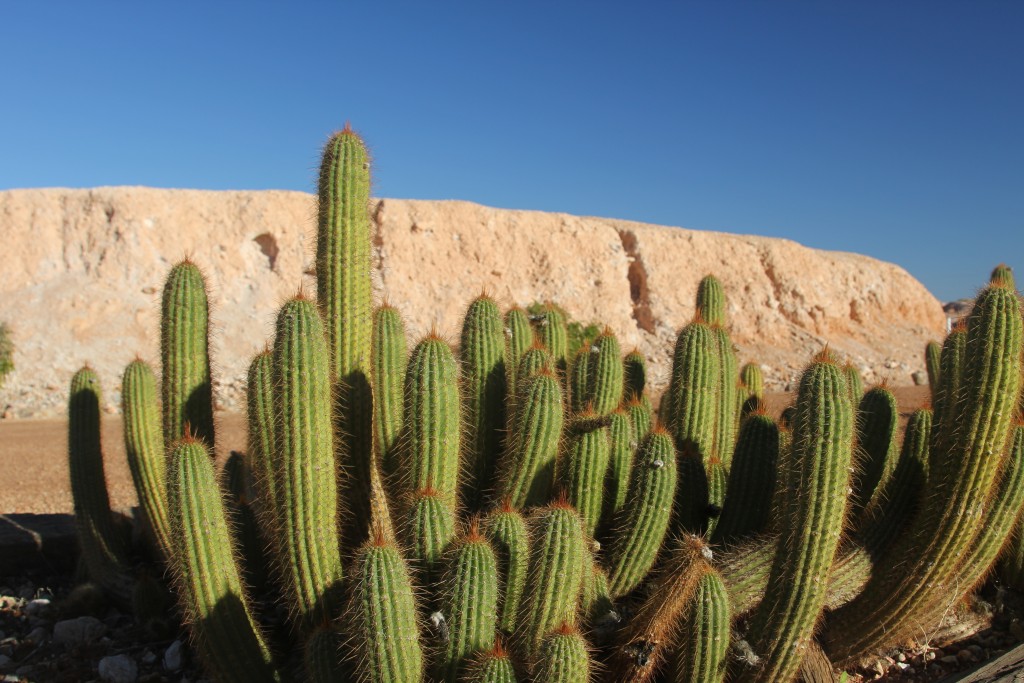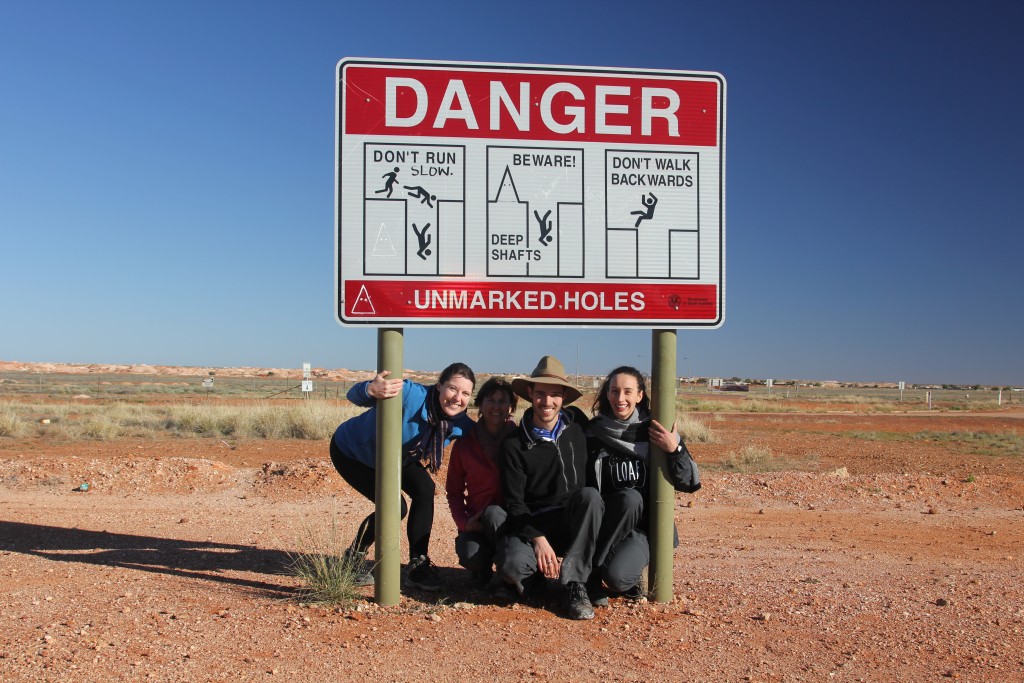The Cool Convoy
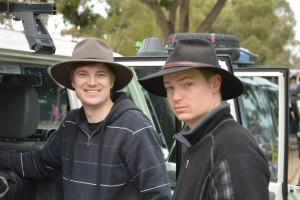
Will and Zach ready to go on the first morning of the 2016 Simpson Desert Expedition
The big morning had finally arrived. We woke to grey skies and wet tents but everyone was pumped with excitement and anticipation. After a little extra time to allow the new teams to pack their vehicles for the first time we were off on the 2016 Simpson Desert Expedition. Each car had chosen their handle for our radio communications – there was Cruiser, Disco, the Angels, Corral, JALT and the Crambos – all perfectly chosen to match their vehicle or occupants. The team was on fire!
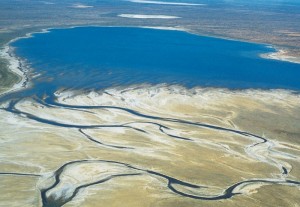
An aerial photo of Lake Eyre full of water – sadly, not my photo
One of the exciting prospects of this trip was the chance to see Lake Eyre with water in it. This vast inland lake, marking the lowest spot in Australia, rarely fills with water due to the low rain falls in its catchment area and the harsh desert conditions. But when it does fill with water it attracts an extraordinary range of bird, animal and fish life, almost materialising out of nowhere, flourishing for a short and rare period in the middle of the desert. Recent heavy rains this season had partially filled Lake Eyre and we were pining to get there to see this amazing spectacle.
The drive north towards Port Augusta gave us the first opportunity to see the benefits of the recent heavy rain. The vast fields of wheat and other crops were vibrantly green with early growth, cattle and sheep roamed their pastures with a healthy glow and the rolling countryside looked just beautiful. As we moved further north the land slowly dried out and the desert started to show itself, sometimes long stretches of road with bare scrub and rocky soil the only thing to see.
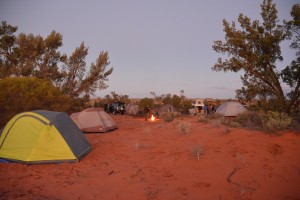
Our first bush camp – a beautiful spot
As we approached Roxby Downs, the purpose-built mining town to support the huge Olympic Dam mining complex, the day’s light was fading and we found a good spot off the paved road to bush camp. This was the first time many of the group had ever truly bush camped, that is just pulling off the road and finding a private and appropriate spot to camp for the night.
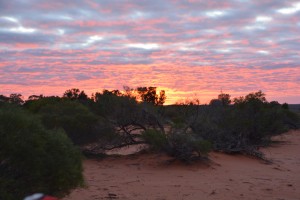
Sunset on the first night with the red sand and desert scrub
But this was a beauty of a spot, good firewood, plenty of room for us to park six vehicles and put up tents, a brightly coloured orange-red sunset lighting up the horizon. That first night the group started to get into their groove – set up camp, build a fire, cocktail hour, cooking dinner on the open fire, enjoying the final hours of the day in a beautiful setting with good family and friends.
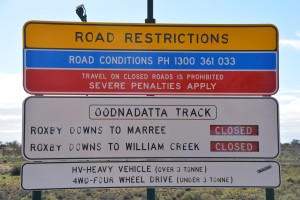
CLOSED! We couldn’t believe they closed the track the day before.
The next morning we drove into Roxby Downs to refuel and admire this modern community built by the huge mining company BHP to house their workers and their families, then drove to the end of the paved road to start our off-road adventure. It was a clear Monday morning, everyone was buzzed to start and all systems were go. But wait, unbelievably, the huge sign at the start of the dirt track said it was closed all the way up the famed Oodnadatta Track, which was to be our path for the next couple of days.
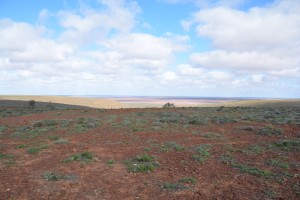
The long drive to Coober Pedy was marked with a lot of the same minimalist scenery
Back into town and searching online where we learned that the authorities had closed this road the previous day due to more heavy rain over the weekend. There was no way of knowing how long it would be closed or what sections might eventually open. The team was disappointed but all true adventures must be flexible to handle any setbacks and we immediately formed a Plan B. Back to the paved road, travelling north to Coober Pedy where hopefully the dirt track would be opened and we could continue our intended off-road journey. And, sadly, this meant we would not get to see Lake Eyre as all the roads to the lake were completely flooded.
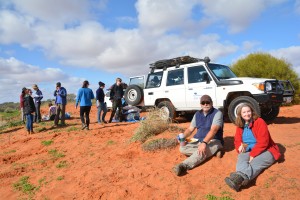
John and Kathy taking a front row seat at our lunch spot on the road to Coober Pedy
The long drive to Coober Pedy tested the drivers’ stamina as many hours passed crossing the flat monotonous desert, broken by a light cover of saltbush and the occasional roaming emu. Such was frequency of the cry on Channel 15 – our chosen convoy channel on the radio – of “Emu on the right” or “Emu on the left” that seeing them became almost normal.
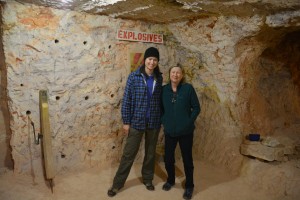
Anna and Julie enjoying the underground mine tour
Coober Pedy is a unique place in the middle of the vast desert. The self-proclaimed ‘Opal capital of the world’, famous for its history of licensing individual miners to dig in small plots and for people to live underground to avoid the intense heat, Coober Pedy is now a curious stopping point for travellers on the way north.
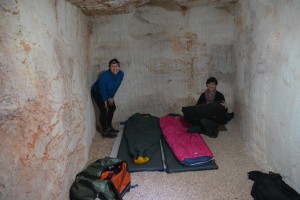
Jessica and Linda preparing their bedding in the underground camp ground
In keeping with the local tradition, we chose to camp at the (allegedly) only underground camp site in the world and to take an informative underground mine tour to gain a better understanding of how and why people came from all over Australia to mine these special gems.
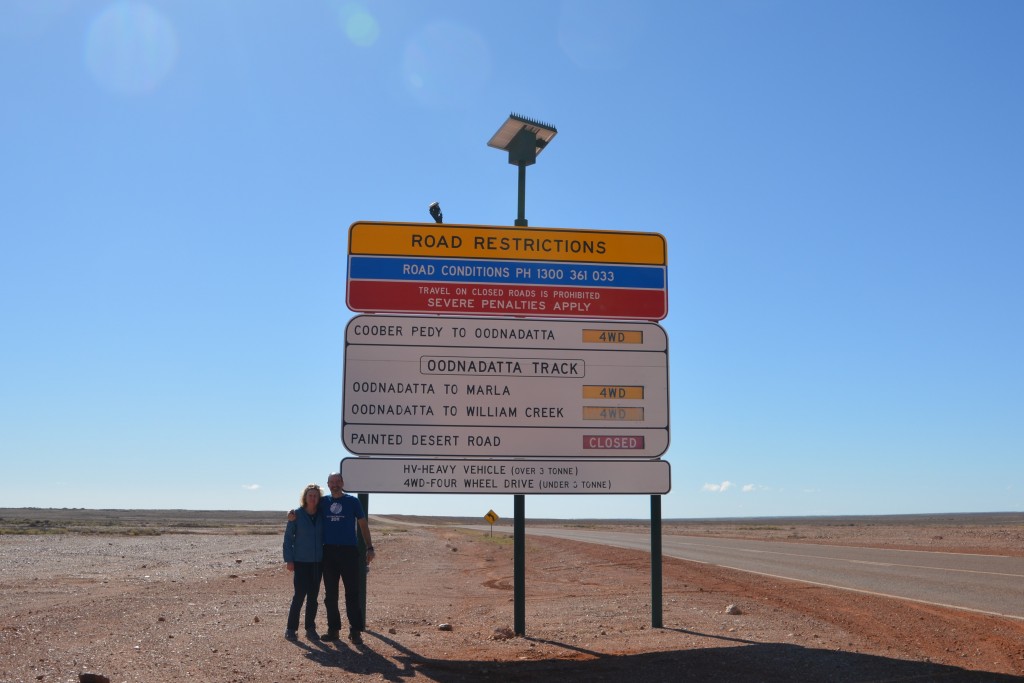
Finally – the sign says the road is open and we’re keen to go
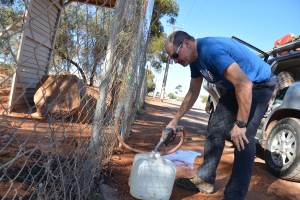
Water is very scarce in Coober Pedy so you have to put your coins in a slot and pump water into your container
The next day we learned that one section of our intended track – the road to the remote settlement of Oodnadatta – was now open so after topping up our tanks and fridges we followed the muddy and rutted track across the barren desert. And barren it was, true moonscape stuff, lifeless brown gibber plains as far as the horizon, absolutely barren. But the track occasionally had deep muddy spots where good driving skills were needed to plow through the muck, mud flying in all directions, and come out the other side. Good fun but perhaps a sign of things still to come.
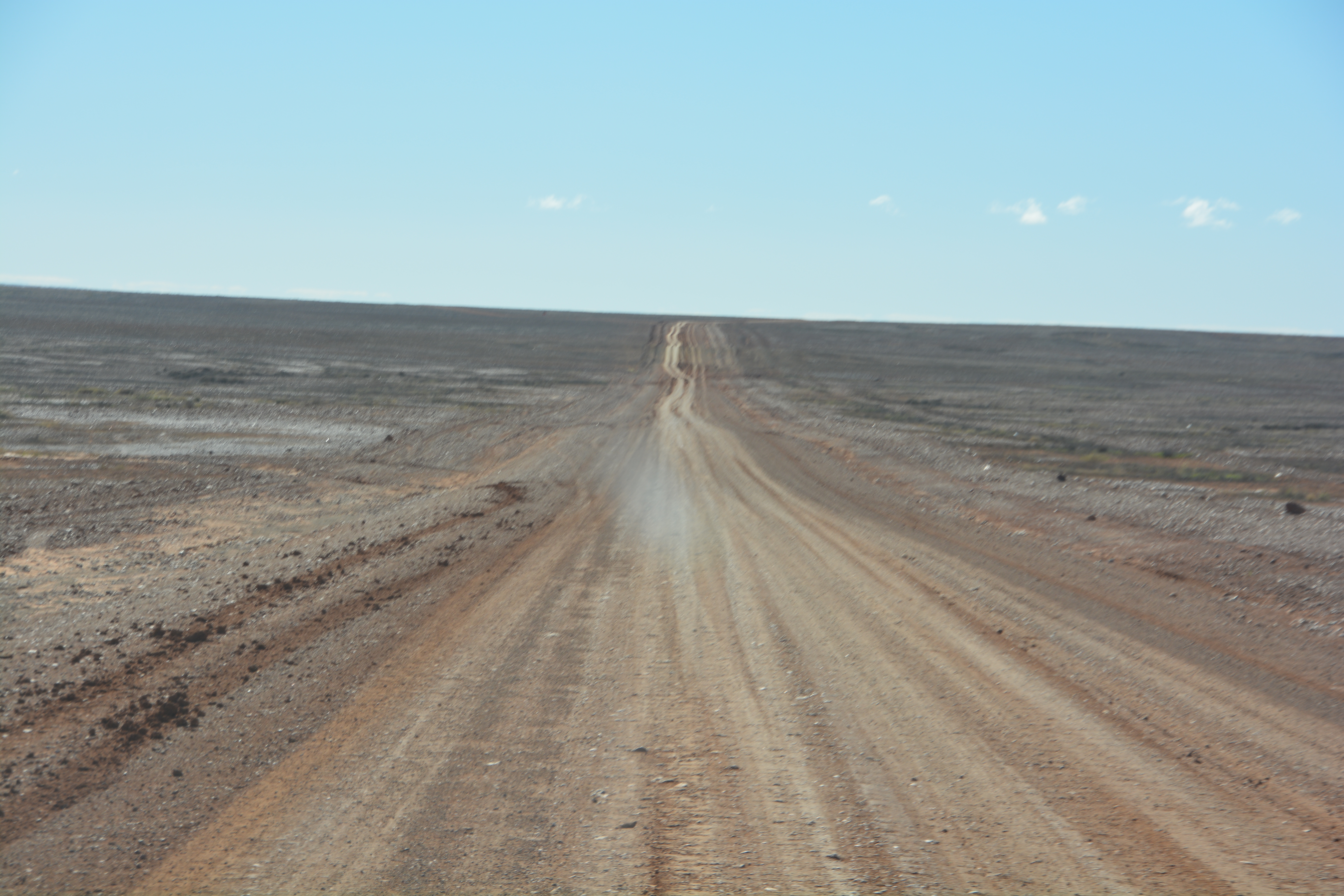
Some parts of this track from Coober Pedy were big and barren
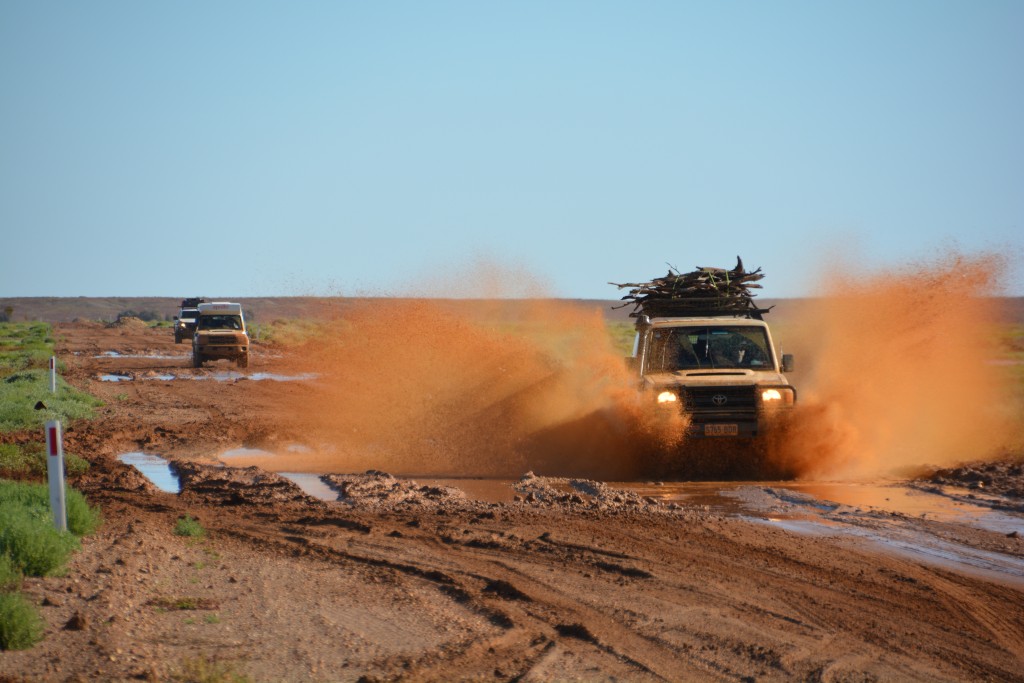
Some stretches of the track were dry and barren but it also had a few muddy sections which allowed us to have some fun
It was along this track that I had a brief conversation on the radio with a driver coming the other way and he referred to us as the Cool Convoy. Well, the name stuck and we became the Cool Convoy for the rest of the trip. And cool we were!
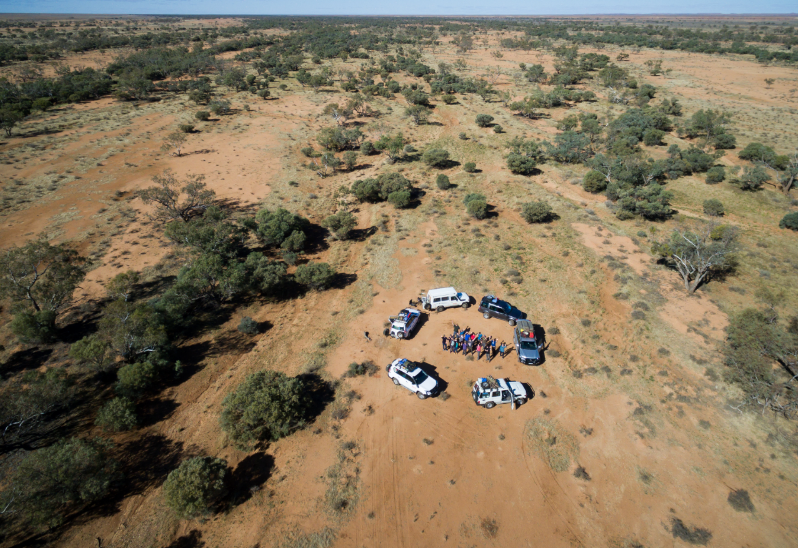
The Cool Convoy circled the wagons for lunch and Will took this amazing photo with his drone
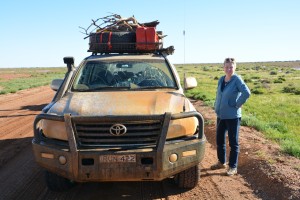
After we got the trucks dirty for the first time it was necessary to take photos
We bush camped that night just outside the little town of Oodnadatta, really no more than a few dusty homes and a couple of pubs, including the well-known Pink Roadhouse. A famous landmark in these brown desolate parts, the large and thoroughly pink building spoke to the eccentricity and quirky sense of humour of people living in such a remote place.
The following morning we heard that the next section of the track was now open, seemingly opening day by day just in front of us, so again we stocked up our tanks and pulled out, heading north on the Oodnadatta Track.
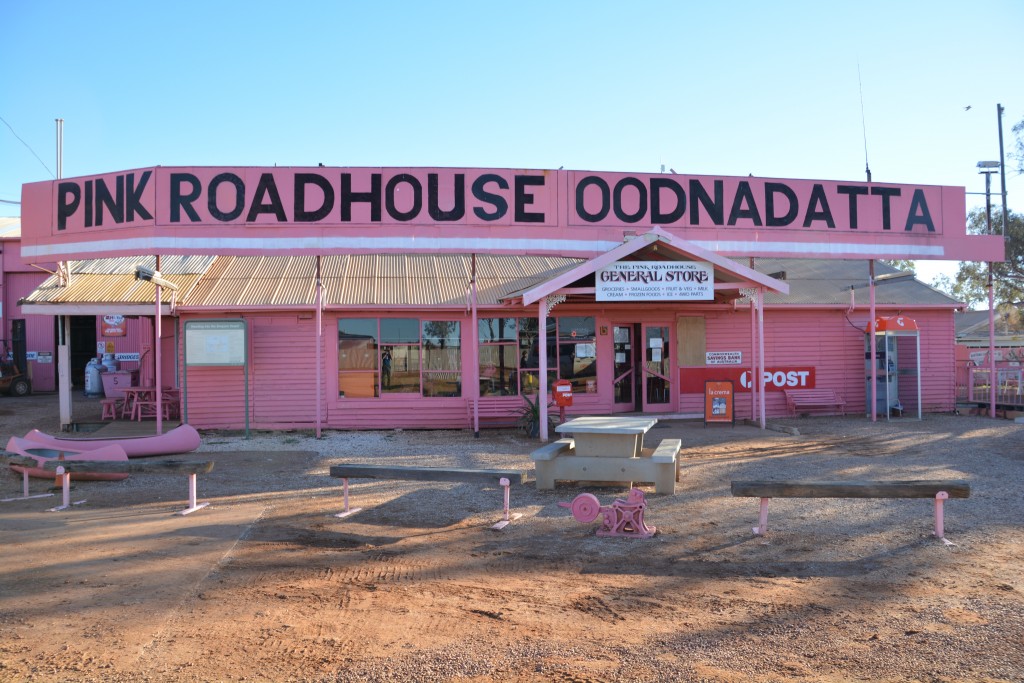
The famous Oodnadatta Pink Roadhouse – aptly named
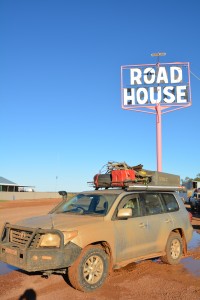
The mighty beast is ready for action!
But we also knew that the track to the remote station of Mt. Dare, traditionally the start of crossing the Simpson Desert, was still closed due to flooding so we recalculated all our supplies, including the Big Three – fuel, water and beer – to ensure we could cross the Simpson Desert and reach the Queensland town of Birdsville – the next supply town – which was about 650 km away.
We also knew that between us and Birdsville was five or six days of hard driving over 1,100 sand dunes across what we now appreciated would be a wet and challenging track. That’s a long way to go with six vehicles which need to be completely self-sufficient. We double checked our calculations and stocked up with about 1,000 litres of fuel, 300 litres of water and 400 cans of beer plus two paramedics and one doctor – well, we thought we had all the basic elements covered. It wouldn’t take long to find out because the next day the fun would really begin!
